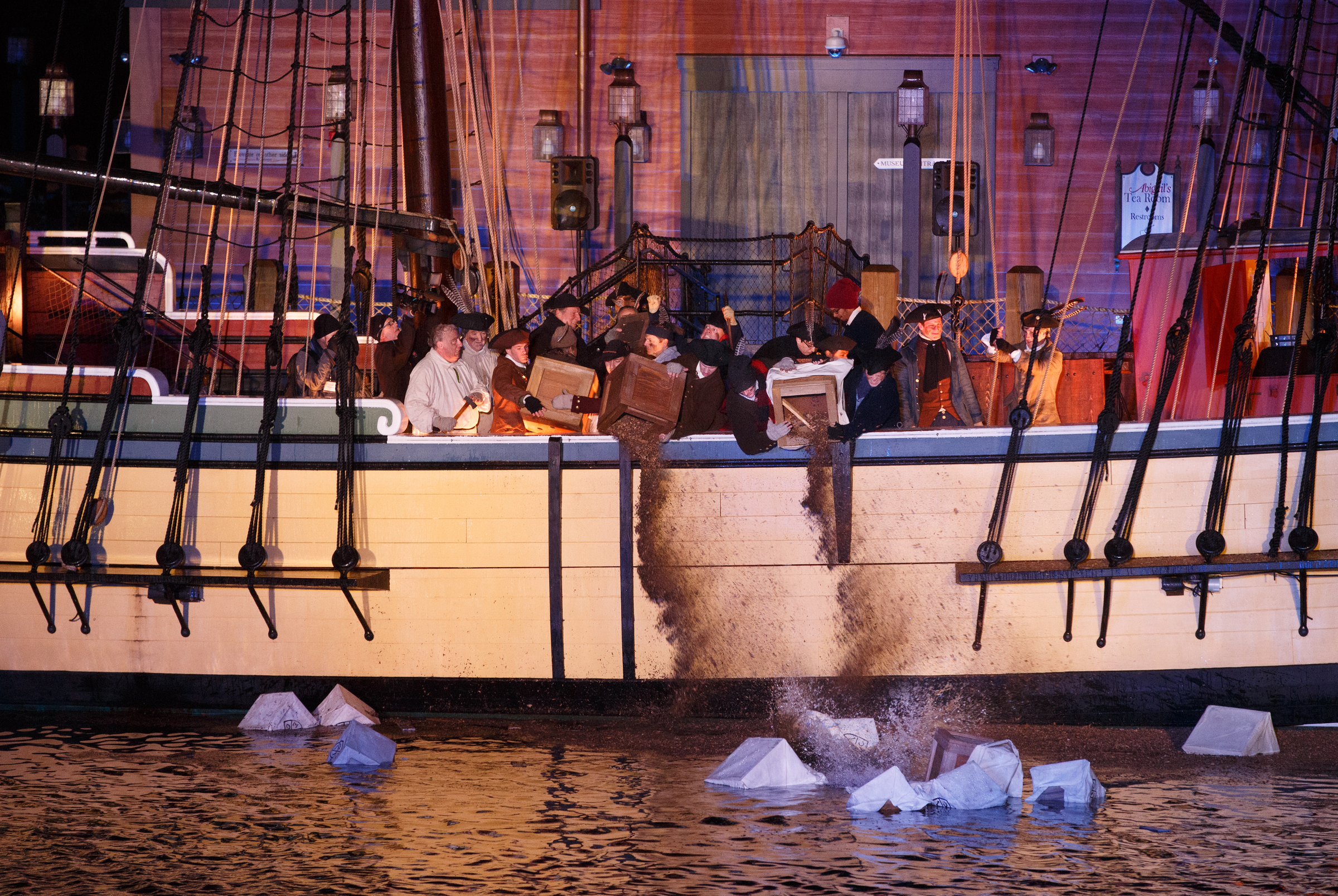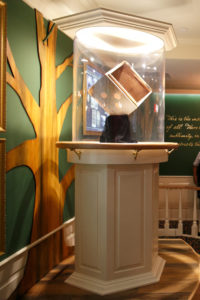

Outside the Boston Tea Party Ships & Museum a group of costumed re-enactors toss crates full of tea into the harbor. It’s Dec. 16, the 243rd anniversary of the American colonists’ protest against British rule. Inside the museum, safely tucked away behind glass, the Robinson Half Chest artifact sits on display.
The morning after the original tea party in 1773, a teenager named John Robinson found the tea chest buried slightly in the sand near the shore. He kept the chest throughout his childhood and it was passed down from generation to generation, according to the museum. It is believed to be the only tea chest that survived the Boston Tea Party.
Models of that simple wooden crate are used each year in the retelling of the story that sparked the American Revolution. “The models used are as exact as possible,” says Evan O’Brien, creative manager for the museum, and during the re-enactments, “the chests are actually cracked open with hatchets.”
The museum focuses on a critical period in U.S. history, from 1773 to 1775, O’Brien notes. Each year’s re-enactment begins with a tea tax debate at Old South Meeting House, the actual hall where colonists gathered. Then the public joins a procession to the waterfront where tea donated by the British East India Company is dumped into Boston Harbor.
The tea dumped into Boston Harbor in 1773 was in fact from China. The tea destroyed during the Boston Tea Party was described as “Bohea.” Bohea is from the Wuyi Mountains in the Chinese province of Fujian, but the term was used by the tea trade at that time to refer to all black tea varieties, according to the museum.
In addition to real Bohea, the ships’ cargo included the black teas Congou and Souchong, and white teas Hyson and Singlo. Those teas are still available today in the museum’s Abigail’s Tea Room.
Abigail’s Teas
- Bohea: One of the first teas imported by the East India Company in the 18th century, Bohea was fired or dried over charcoal before being transported to the colonies. Bohea has a flavor similar to a contemporary oolong.
- Congou: This black tea was prestigious in colonial America and a favorite of the British upper classes.
- Hyson: This early spring green tea, picked by April 20 each year, was a favorite of George Washington and Thomas Jefferson. The tea was so popular with English consumers that it was taxed at a higher rate than other teas.
- Singlo: Singlo is a term for Chinese green tea encompassing several varieties picked later than the spring hysons. Names for singlo tea include Twanky, Eyebrow and Gunpowder teas.
- Souchong: This classic black tea, famous for its smoky aroma, came from the Wuyi Mountains in the Fujian province of China. Most of today’s souchong exports are smoked with pinewood and are called lapsang souchong.
Tea Market
Get More Value from Your Tea: BRU Maker One
+41794574278
Jacque's Organics
(647) 804-7263
Its really interesting to read about it.